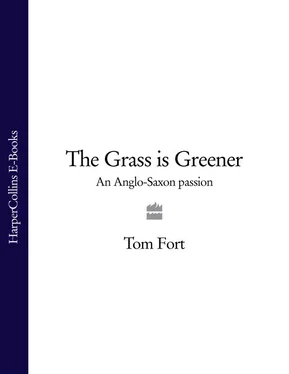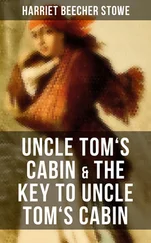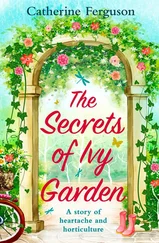The French tradition was founded on a delight in, and dependence on, geometric patterns. The lines are drawn by channels of water, by hedges and avenues of trees, by paths – all of undeviating straightness. Within the angles of intersection are arranged in symmetrical harmony all manner of attractions: fountains, flower beds, arbours, pools, grass plots and so on. All are where they are according to a grand design. For the first time, the garden becomes an overt statement of Man’s ambition and ability to control the world around him and make it reflect his image. In the case of the gardens of the Sun King, it may well be that what seems to us now their chilly and regimented splendour was the projection of the proprietor rather than their designer. But since neither Louis nor Le Nôtre – nor indeed, I’m sorry to say, King Charles – evinced any interest in the cultivation of grass, we need not dwell on their ambitions.
Others were more enlightened, and inclined to resist the French model. John Worlidge, in his Art of Gardening (1677) bemoaned the influence of the ‘new, useless and unpleasant mode’, denounced the banishment of ‘garden flowers, the miracles of nature’, contending that the French system of gravel walks and grass plots was fit for kings and princes only. He celebrated the delight taken in their gardens by Englishmen of all classes, the noble in his country seat, the shopkeeper with his ‘boxes, pots and other receptacles, plants etc.’, the cottage dweller with his ‘proportionable garden’.
Worlidge was an early pragmatist. Far removed from court circles, free from any need to fawn and flatter, he knew perfectly well that the vast spread of Versailles with its armies of gardeners was no sort of an example for an Englishman. For him gardening’s proper companion was common sense rather than high ambition. His approach – and that of his equally sensible contemporary, John Rea – was severely practical. Rea’s Flora of 1665 honoured on an epic scale the glories of flower, plant and fruit (the fashionable delight in patterns of grass and gravel, to the exclusion of all else, he damned as ‘an immoral nothing’).
Buried within its mass of instruction is some scanty advice about laying turf with a turfing iron, and disciplining it with a ‘heavy, broad Beater’. Rea’s tips echo those in the other influential guide of the time, John Evelyn’s Kalendarium Hortense . Evelyn is remembered these days, if at all, for his voluminous diary which was discovered in an old clothes basket at his home more than a hundred years after his death. In his time he was famed as the first great advocate of tree planting, and a dispenser of generally sound, if exceedingly wordy, gardening lore. He tells the lawnsman that in October ‘it will now be good to beat, roll and mow … for the ground is supple and it will even all inequalities’.
It is improbable that a rich landowner such as Evelyn, or literate gentlemen such as Rea and Worlidge, would have done anything more strenuous in their gardens than giving the orders; so perhaps we should excuse their reticence on technical matters, annoying though it is. Beating was done with a mallet, rolling with a roller not materially different from our own. Mowing deserves a closer look.
The word is Old English, the science as ancient as the most ancient Egyptians, who used a sickle adapted from an animal’s jawbone to harvest their corn. The Romans used a one-handed implement and stooped to cut. But the Englishman of the Middle Ages preferred to stand up straight, wielding a scythe almost as long as himself. It had two handles attached to its slightly curved willow snead, and a long blade of soft metal at right angles, which was sharpened with a block of sandstone.
Efficient scything demanded – beyond the stamina to keeping swinging through the long days of harvest-time – precision, dexterity and a harmony between man, his tool and his task. Until the machine age consigned him to redundancy, the scytheman was highly valued, and there was a romantic appeal to him and his labour. His oneness with landscape excited writers seeking to distil its essence; most notably Tolstoy, who devoted a memorable passage in Anna Karenina to Levin’s spiritual flight into the boundless golden cornfields, where – scythe in hand – he mixed his sweat with that of the serfs as he tasted again the old bond with Mother Earth.
On a more modest scale, the poet Andrew Marvell explored the metaphorical possibilities:
I am the mower, Damon, known
Through all the meadows I have mown.
Despite presumably well-paid work and a healthy outdoor way of life, Damon is not happy. Love, of course, has made him so:
Sharp like his scythe his sorrow was
And wither’d like his Hopes the Grass.
Marvell makes play with his conceit:
… she
What I do to the grass, does to my Thoughts and Me.
The poem reaches an absurd climax, as:
The edged Stele by careless chance
Did into his Ankle glance.
The physical hurt Damon repairs, with ‘Shepherd’s-purse and Clowns-all-heal’. But there is a deeper cut, for which no cure this side of the grave can heal:
Til death has done that this must do,
For Death, thou art a Mower too.
Marvell’s lines –
While thus he threw his Elbow round,
Depopulating all the ground,
And, with his whistling scythe does cut
Each stroke between the Earth and Root
– are the closest to a description of 17th-century scything that I have been able to discover; and, of course, refer to corn and meadow grass rather than anyone’s grass plot. Clues about the tending of these are provided in a collection of drawings of garden tools executed by Evelyn to illustrate what was to have been his life’s crowning work, his Elysium Britannicum , a survey of his native land and its achievements envisaged on such a massive scale that his energies were exhausted before it had advanced much beyond the planning stage. These include a group of implements for the lawn: a turf-lifter, a turf-edger and a scythe.
We must assume that this was how it was done. That it was done, that by the end of the 17th century the cultivation of fine grass in the form of bowling green or ornamental lawn had become general practice in the gardens of the great and the rich, is given some circumstantial weight by the accounts of that endlessly curious and untiring traveller, Celia Fiennes. In Mrs Stevens’s ‘neat gardens’ at Epsom, she found six grass walks guarded by dwarf fruit trees; at Durdans in Surrey ‘three long grass walks which are also very broad’; at Woburn a large bowling green with eight arbours, and a seat in a high tree where she sat and ate ‘a great quantity of the Red Carolina gooseberry’. Visiting New College, Oxford, in 1694, Miss Fiennes much admired a great mound ‘ascended by degrees in a round of green paths’, and noted a bowling green.
Thirty years later the celebrated Oxford antiquarian Thomas Hearne lamented the rage for lawns. He noted sourly in his journal the destruction of the ‘fine, pleasant garden’ at Brasenose ‘purely to turn it into a grass plot and erect some silly statue there’. As early as the 1670s, Christchurch, richest and grandest of the Oxford colleges, had enclosed a smooth, green lawn intersected by gravel paths, and reached by a noble flight of baroque steps. The fellows of Pembroke had their bowling green, while at Trinity College, Cambridge, Newton’s feet trod soft turf as his mind wrestled with the mysteries of gravitational pull and refrangibility.
It would be absurd to pretend that the gardeners of the later Stuart period were at all excited by the subject of grass culture – or, I suppose, to suggest that the real gardeners of any period have been. Thus, despite Sir William Temple’s already quoted tribute to English turf, it does not figure in his long, lyrical description of the garden at Moor Park where he spent his honeymoon in 1655: the ‘perfectest figure of a garden I ever saw’, with its gravelled terrace running along the house, its three flights of steps down to a rectangular parterre quartered by gravel walks and bounded by cloisters, its grotto, fountains, statues, summer house, abundance of fruit trees and marked absence of flowers. The gardens of the Russells at Woburn at least boasted that bowling green. But it was the flower and vegetable gardens, and particularly the orchards (in 1674 fifteen different species of plum and twelve of pear were planted) which received the attention of the head gardener, John Field.
Читать дальше












